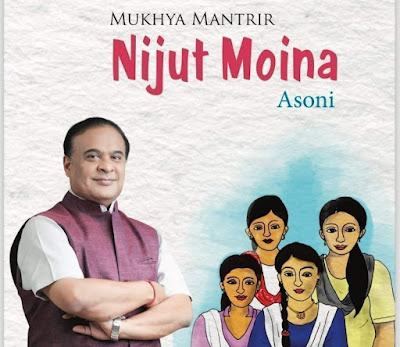Goods and Services Tax Government of India Explained : Provisions of GST Compensation Act
Hello, aspirants are you preparing for UPSC Mains or APSC Mains? If yes, then you must be aware of the most important topics such like GST Goods and Services Tax for the upcoming mains exam preparation. Therefore every aspirants of UPSC & APSC need to know the Goods and Services Tax of India as well as the Provisions of GST Compensation Act.
In this regard “World_Polity” decides to provide you the full detail of GST Goods and Services Tax important questions & answers and the Provisions of GST Compensation Act for the upcoming mains exam.
This article concentrates on briefly helping you to understand the GST Goods and Services Tax India/Goods and Services Tax Government of India for the upcoming UPSC Mains as well as APSC Mains exam. The Goods and Services Tax in India and the provisions of GST compensation act is extremely important and should be a part of your preparation.
GST Goods and Services Tax India
A new tax regime which was started in India in the form of GST – Goods and Service Tax from the month of April, 2017. It is said that Goods and Service Tax will give the country most progressive tax reform. It is also explained that when Goods and Service Tax will be implemented, the tax burden on the people will be reduced and rationalised. It will make the tax process easier and reduce the cost of goods and services for the consumer.
The 122nd Constitution Amendment Bill has been passed in the parliament in the year 2016. Therefore, it has become easier for the government to implement GST Goods and Services Tax from April, 2017. All the prevailing indirect taxes will be subsumed into a single tax for the consumer.
The central government will levy and collect Central Goods and Service Tax and state government will levy and collect the Goods and Service Tax within the state. It is proposed that services and goods would be subjected to taxes on value addition at each stage which bring down overall tax burden for the consumers. The Goods and Service Tax Bill provides for compensation for the revenue losses to the states for five years.
Goods and Services Tax (India) What is GST?
Goods and Services Tax-GST- is a comprehensive tax levy on manufacture, sale and consumption of goods and services at a national level.
Through a tax credit mechanism, this tax is collected on value-added goods and services at each stage of sale or purchase in the supply chain. The system allows the set-off of GST paid on the procurement of goods and services against the GST which is payable on the supply of goods or services.
However, the end consumer bears this tax as he is the last person in the supply chain. Experts say that GST is likely to improve tax collections and boost India’s economic development by breaking tax barriers between States and integrating India through a uniform tax rate.
What are the benefits of GST?
Under GST, the taxation burden will be divided equitably between manufacturing and services, through a lower tax rate by increasing the tax base and minimizing exemptions . It is expected to help build a transparent and corruption- free tax administration.
GST will be is levied only at the destination point, and not at various points ( from manufacturing to retail outlets). Currently , a manufacturer needs to pay tax when a finished product moves out from a factory, and it is again taxed at the retail outlet when sold.
How will it benefit the Centre and the States ?
It is estimated that India will gain $ 15 billion a year by implementing the Goods and Services Tax as it would promote exports , raise employment and boost growth. It will divide the tax burden equitably between manufacturing and services
What are the benefits of GST for individuals and companies ?
In the GST system, both Central and State taxes will be collected sale. Both components (the Central and State GST) will be charged on the will benefit individuals as prices are likely to come down. Lower prices will lead to more consumption, thereby helping companies.
What type of GST is proposed for India?
India is planning to implement a dual GST system. Under dual GST, a Central Goods and Services Tax (CGST) and a State Goods and Services Tax (SGST) will be levied on the taxable value of a transaction.
All goods and services, barring a few exceptions, will be brought into the GST base. There will be no distinction between goods and services.
Which other nations have a similar tax structure?
Almost 140 countries have already implemented the GST. Most of the countries have a unified GST system. Brazil and Canada follow a dual system where GST is levied by both the Union and the State governments. France was the first country to introduce GST system in 1954.
Will GST be an extra tax?
It will not be an additional tax. CGST will include central excise duty (Cenvat), service tax, and additional duties of customs at the central level; and value-added tax, central sales tax, entertainment tax, luxury tax, octroi, lottery taxes, electricity duty, state surcharges related to supply of goods and services and purchase tax at the State level.
What will be the rate of GST?
The combined GST rate is being discussed by government. The rate is expected around 14-16 per cent. After the total GST rate is arrived at, the States and the Centre will decide on the CGST and SGST rates. Currently, services are taxed at 10 per cent and the combined charge indirect taxes on most goods is around 20 per cent.
Will goods and services cost more after this tax comes into force?
The prices are expected to fall in the long term as dealers might pass on the benefits of the reduced tax to consumers.
Why are some States against GST? Will they lose money?
The governments of Madhya Pradesh, Chhattisgarh and Tamil Nadu say that the
information technology systems and the administrative infrastructure will not be ready by April 2010 to implement GST. States have sought assurances that their existing revenues will be protected. The central government has offered to compensate States in case of a loss in revenues.
Some States fear that if the uniform tax rate is lower than their existing rates, it will hit their tax kitty. The government believes that dual GST will lead to better revenue collection for States. However, backward and lessdeveloped States could see a fall in tax collections. GST could see better revenue collection for some States as the consumption of goods and services will rise.
How will GST be implemented?
The empowered committee is likely to finalize the details of GST by August. But States have to sort out several issues like agreement on GST rates, constitutional amendments and holding talks with industry associations. Experts feel the drafting of legislation and the implementation of law will take time.
What are the items on which GST may not be applied?
Alcohol, tobacco, petroleum products are likely to be out of the GST regime.
Goods and Services Tax India Login
GST LOGIN – GST PORTAL — Click Here
Goods and Services Tax India Website — Click Here
Provisions of GST Compensation Act :
• The projected nominal growth rate of revenue subsumed for a State during the transition period shall be 14% per annum.
• For the purpose of calculating the compensation amount payable in any financial year during the transition period, the financial year ending 31st March 2016 will be taken as the base year.
• There shall be levied and collected in accordance with the provisions of this Act, a cess to be called the GST Compensation Cess.
• The proceeds of the GST Compensation Cess leviable shall be credited to a non-lapsable fund known as the GST Compensation Fund in the Public Account, and shall be utilized for purposes mentioned.
• All amounts payable to the States under compensation head shall be paid from the Goods and Tax Compensation Fund.
• Fifty percent of the amount remaining unutilized in the GST Compensation Fund at the end of the transition period shall be transferred to the Consolidated Fund of India, and shall be distributed between the Centre and the States and amongst the States as per provisions of clause (2) of article 270 of the Constitution; and the balance fifty percent shall be distributed amongst the States in the ratio of their total revenues from SGST in the last year of the transition period.
Now World_Polity is on every platform you can connect with us by just clicking the below social media links. Thank You.
• Subscribe our Youtube channel
• Join our Facebook Page
• Join our telegram Channel
* Recent Top Most Searches :
* Agricultural Revolutions in India
* Pradhan Mantri Gramin Awaas Yojana 2021
* Panchayati Raj System in India
Well if you like the GST Goods and Services Tax India for UPSC do comment & show your support by sharing it to the other aspirants and if there is any query you are welcome to ask.



